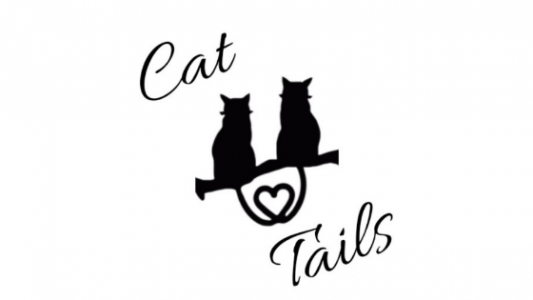
March 22, 2019
Author: Melissa Sitzman
I look back and can’t believe how overweight my cat, Princess, was in 2006! At the time, I didn’t even realize how big she was. I went through a few tough years and in those years, my cats missed a few annual checkups. I highly recommend that you take your pets to the vet, at least once a year. Senior cats should be seen every six months. That’s how diseases are spotted and treated, before they become a serious issue.
Unfortunately, that wasn’t how it happened for Princess, and I still beat myself up for it, to this day. In the summer of 2009, Princess started losing a lot of weight, and fast. Her hind legs began sliding out from underneath her, as well. I suddenly couldn’t keep up with the litter box, no matter how often I scooped it! She was also drinking so excessively, that, she would lay next to the water dish, to drink. She was diagnosed with feline diabetes and neuropathy in June of 2009. Neuropathy was the result of having high blood glucose levels, for an extended period of time. It’s, basically, nerve damage that’s caused by uncontrolled diabetes.
Here’s a list of possible Feline Diabetes Symptoms;
- Excessive and frequent urination
- Breath that smells sweet
- Excessive drinking of water
- Excessive hunger or a change in appetite
- Being overweight and/or weight loss (This is not always the case, some cats are diagnosed while at a healthy weight.)
- Walking on hind hocks (not up on their toes, like they should be)
- Feet that slide out from under their body and/or weak legs.
- Dull looking and oily coat
- Lethargy
- Hiding
- Irritability
- Drooling
- Unusual litter box odor
- Urinating or defecating outside of the litter box and/or on soft objects
Not all cats will have all symptoms and overweight cats are at a much higher risk. Cats are treated with insulin injections and Princess received them twice a day. She was on them for four years! The veterinarian also had me put her on a dry cat food with lower carbohydrate and higher protein percentages. However, her condition didn’t improve and she also developed Inflammatory Bowel Disease!
That’s when I made the decision to switch her food! I, actually, wrote about this, in another blog post titled Raw Pet Food, The FDA and My Sick Cat. Instead of re-typing all the details, I’m going to continue by quoting myself, from that post;
“In 2012, I took a leap of faith and decided, against our veterinarian’s wishes, to start feeding both of my cats, a raw pet food. Rad Cat was just about the only raw cat food on the market, at that time, that could be purchased locally. So, that’s what I switched my cats to. At first, my cats didn’t want to eat it. It wasn’t until I mixed it with canned food, that they devoured it! I started weaning them off of kibble and slowly replaced it with more raw and canned food.
Then, one day, Princess didn’t seem to be doing well, at all. I rushed her to a vet hospital, where I learned that her blood glucose levels were dangerously low! Because I had changed her food, and because her regular veterinarian had kept her on the same amount of insulin (despite me telling him about the diet change), she nearly died! Her blood glucose had dropped to dangerously low levels. After the vet stabilized her, I decided it was time to switch veterinarians. The new vet taught me how to test blood glucose levels at home, and how to know when, and if, Princess needed insulin. She hasn’t had an insulin injection, since!
Feeding raw food, not only seemed to send Princesses diabetes into remission, it seemed to cure her digestive issues, as well. I had never seen my cats so healthy and happy!”

On April 1, 2019, Princess will be turning 19 years old! If you want your cats to live a long, healthy lives, feed them a species appropriate diet! Dry food is not a good choice for cats, as it does not provide enough moisture and the percentage of carbohydrates in them, is far too high! (There’s a reason feline diabetes and kidney disease are becoming so common in cats!) Think about what a cat would eat in the wild.
Cats should be fed, either, a low carb, high protein canned/ wet food or a raw cat food. I, actually, mix the two. I was having issues with Princess, recently, after the company that made her raw food, went out of business. However, I found an alternative and she’s doing really well, again! If you would like to know what I feed her, leave a comment.
I highly recommend doing a little research, yourself, to try to find the right food for you and your cat. There’s a really good comparison chart on the website catinfo.org that’s written by Lisa A. Pierson D.V.M. that shows carbohydrate and protein percentages for a large variety of different brands and kinds of canned and raw cat foods. I’ll leave a link to that chart, below.
I hope you find this information helpful and that it keeps someone else from ending up with a diabetic cat!
Disclaimer:
I am not affiliated with nor am I receiving compensation from the website, it’s author or any of the food companies listed on the website or cat food chart that I am linking to below. You should always consult with a veterinarian when switching your pets food. I’m not a vet, I’m simply sharing what worked for me and my cat.
Here’s the link to the food chart mentioned above:
Cat Food Comparison Chart on Catinfo.org by Lisa A. Pierson

